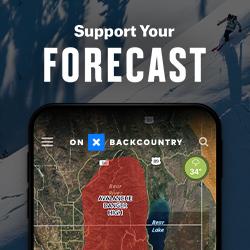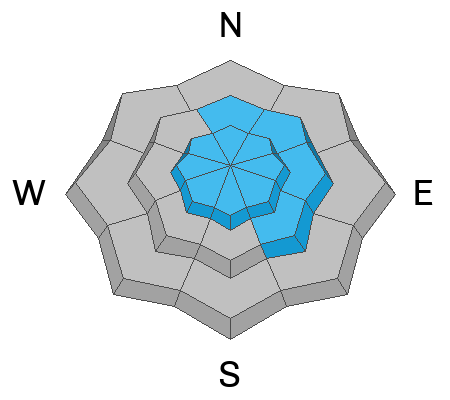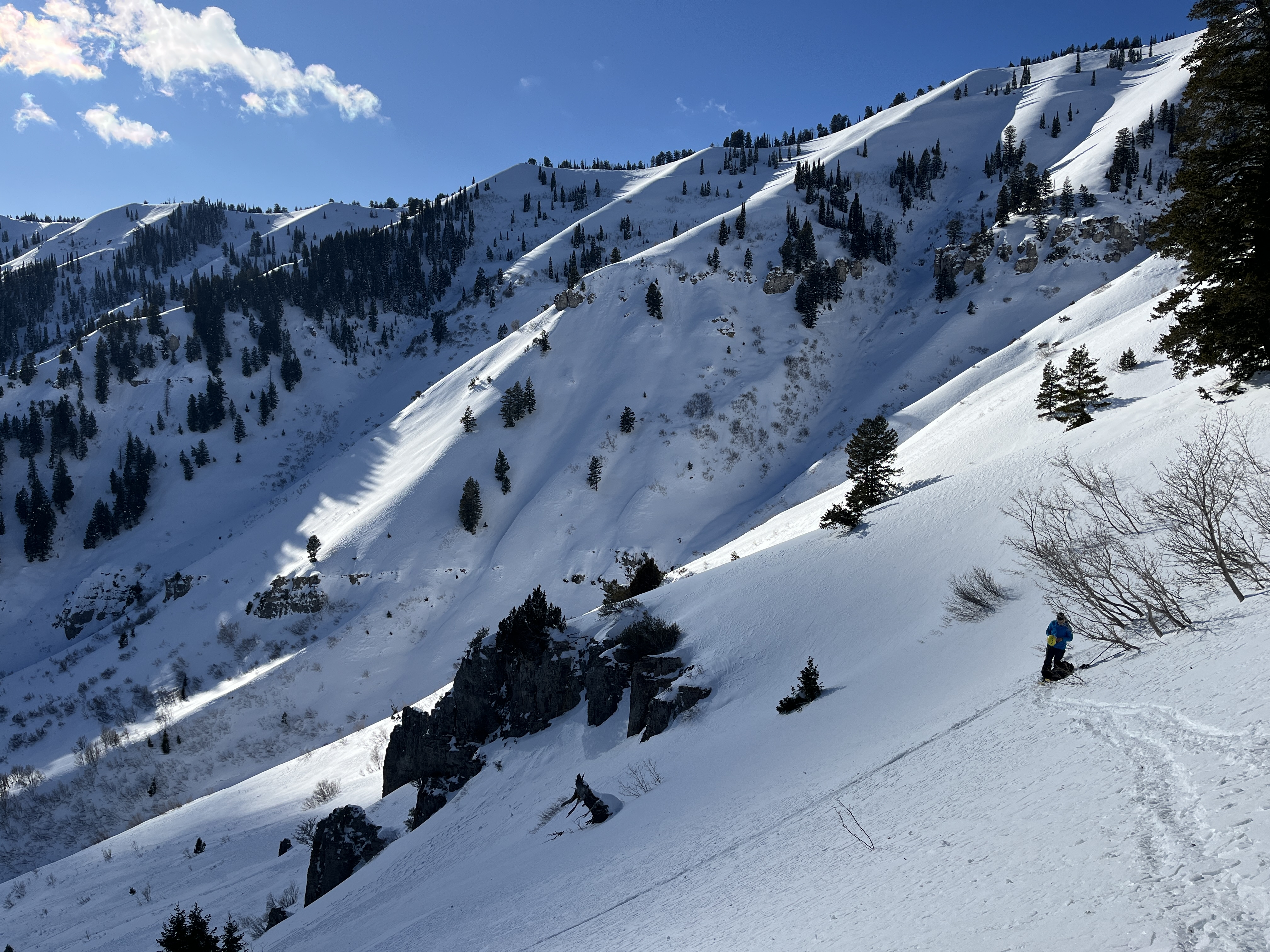Recent drifting built stiff wind slabs on weak, sugary (or faceted) surface snow in exposed terrain, and it is possible to trigger 1 to 2 feet thick slab avalanches of wind-drifted snow on steep drifted slopes. Thick wind deposits, drifts, and wind slabs are easy to identify, and you should avoid them on slopes steeper than 30°. Wind-drifted snow is generally stiffer than the surrounding snow, and wind slabs can produce hollow drum-like sounds. Some wind slab avalanches could be triggered remotely.
- Avalanches of wind-drifted snow are most likely on the lee side of major ridges, especially on slopes capped by cornices. Fresh wind slabs may be found in and around terrain features like cliff bands, sub-ridges, gullies, and scoops.
- Many stiff and thick wind slabs built up on preexisting weak surface snow and some might be quite sensitive and easy to trigger. On the other hand, hard wind slabs often allow people to get well out on them before releasing suddenly, like a giant mouse trap.
- Watch for shooting cracks as an obvious sign of instability.
Fresh drifts probably overloaded slopes with poor snow structure, and although unlikely, isolated hard slab avalanches, breaking 2 to 4 feet deep on a persistent weak layer near the ground are possible, and the consequences could be severe. Suspect rocky, windswept slopes and northerly facing terrain with generally shallow snow cover. While the snow is stable on most slopes, a dormant, persistent weak layer near the ground is still a potential problem in isolated or outlying terrain. Deep hard slab avalanches are possible in extreme mountain terrain, and rocky, windswept slopes with thin snow cover are suspect. Isolated hard slab avalanches might be triggered remotely (from a distance) or from below.







